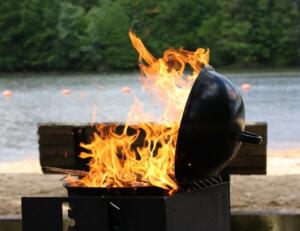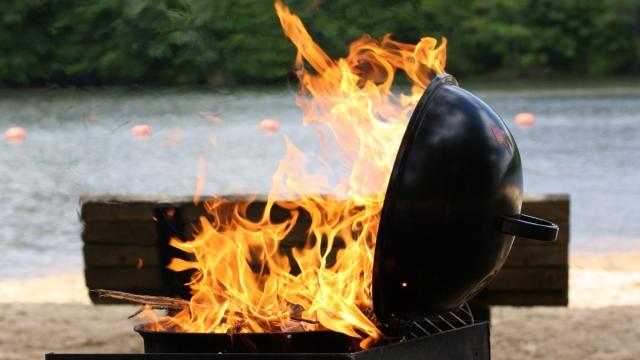Grilling is always a great way to pass the time with friends and family. However, there are plenty of things to consider when hosting a barbeque.
These aspects of grilling will ensure that you keep everyone safe during the fun get-together.
Temperature recommendations should be taken seriously. Proper cooking temperatures ensure that all the bacteria on a piece of food are destroyed.
You will need to make sure you have a thermometer handy to check for correct internal temperatures reach before serving any meat.
 Beef
Beef
Do not depend on the color of the meat as it can be misleading.
You need to make sure that once the meat is cooked that it stays warm. If you do not plan to serve your food right away, refrigerate cooked beef immediately.
Beef should be at least 145 degrees on the inside before it is served.
Chicken
Chicken is pink when it is raw and turns white as it cooks. However, just because it is white does not mean it is safe to consume.
The internal temperature of chicken should reach 165 degrees, at least.
No matter if the chicken is on the bone, cut into strips, or are boneless chicken breasts, you will need to ensure to take the temperature of all the chicken pieces.
Pork
Pork will also turn white when it is completely cooked.
You will need to ensure that you use the thermometer to check that the temperature of the meat reaches at least 160 degrees.
Fish
Most people will cook the fish until it is flakey. This does not mean that it is done.
At times the temperature may be cooler than it should be even though it is fork tender. It is important to always test fish.
The fish should reach at least 140 degrees before it is consumed. Great, hearty and less flakey fish for grilling include:
- Tuna
- Amberjack
- Halibut
- Swordfish
- Haddock
- Mahi Mahi
- Salmon
- Grouper
- Cod
- Catfish
Vegetables
No grilling get together is complete unless you have vegetables off the grill as well. One safety tip that is crucial is that you never cross contaminate.
This means do not use the same cutting board and knife that you did when you cut the meat. Doing so will transfer bacteria and blood to the vegetables.
Make sure to wash your hands to also ensure that you are not cross contaminating the vegetables.
Also, coat the vegetables with oil to ensure that they do not burn while they are on the grill.
Most people wrap the vegetables with aluminum foil and add in the seasonings with fresh garlic in the package.
When the meat is half way done, add the vegetable package to the grill. This will ensure that the vegetables are done when the meat is.
If you are unsure if the vegetables are done, use a fork to test the tenderness of the vegetables.
For a handy guide on grilling and food preparation and safety, check out this convenient poster by clicking here.

